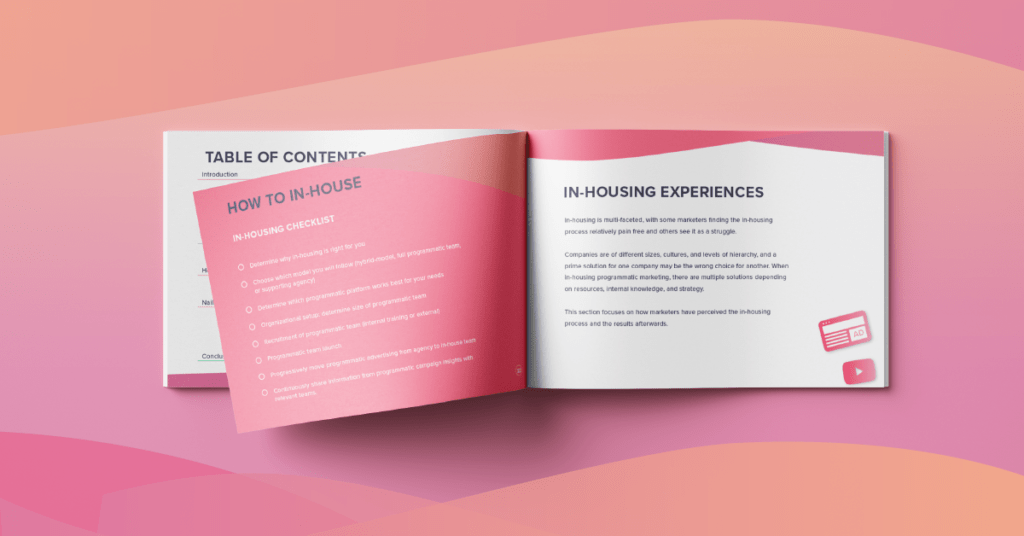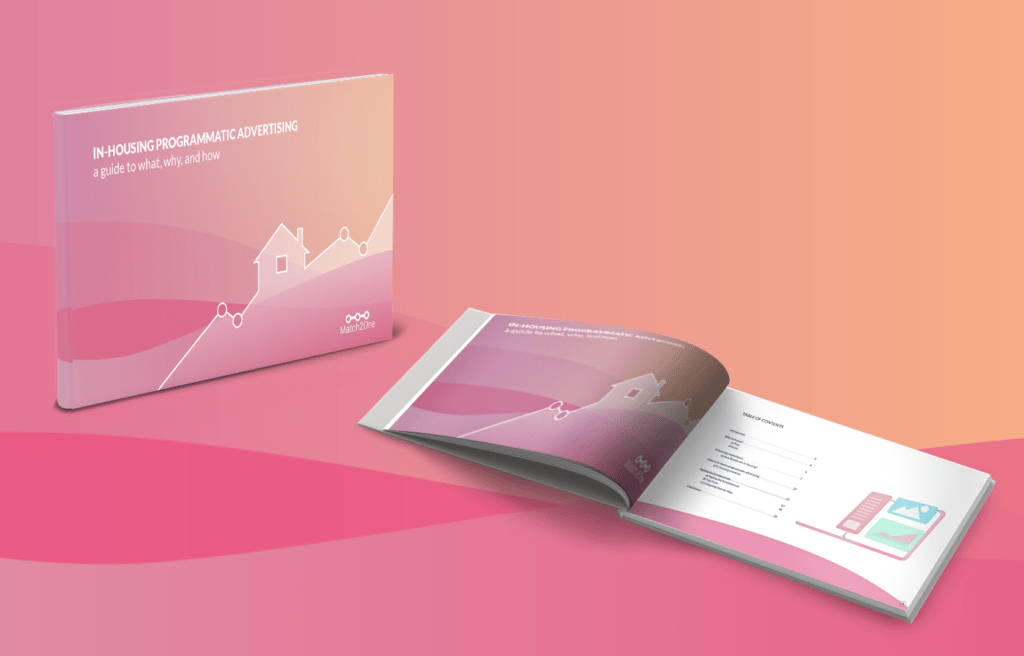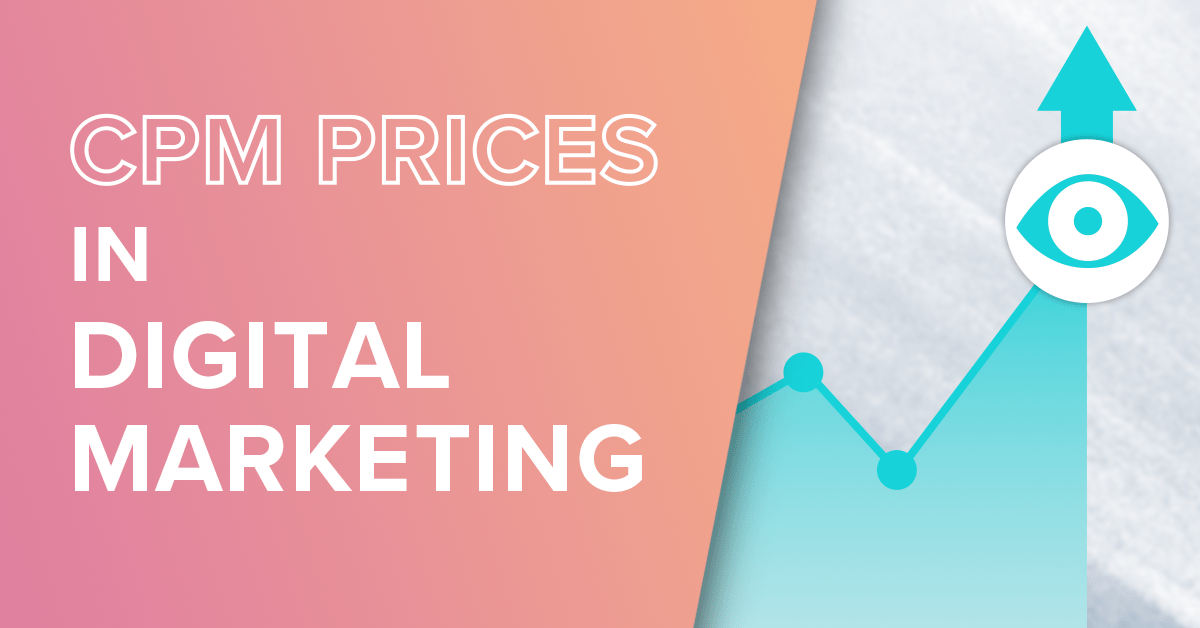All You Need to Know About In-housing Programmatic
June 17, 2020

In-housing is a term that more and more brands have become familiar with. In-housing programmatic advertising is not an exception.
An increasing number of brands are looking to in-house their digital advertising due to a willingness for higher cost-efficiency.
In this article, we explore what in-housing programmatic advertising can result in, not only in regards to cost-efficient marketing, but also as a tool for increased control, insight, and flexibility for campaigns.
Download the full eGuide
The Programmatic In-housing eGuide is now available for you to download for free. Get full insight into why and how to in-house programmatic advertising and a run-down of which in-housing model works for you.
Why bring programmatic advertising in-house?
In-housing is growing in popularity as more marketers are becoming confident in bringing more complex tools within their company. In fact, 92% of CMO’s and senior marketers are planning to maintain or increase in-house capabilities for programmatic and digital advertising.
In fact, the world’s second-biggest advertiser, Unilever, reported savings of more than $500M since bringing their marketing efforts in-house.
Other major advertisers who are now running substantial in-house efforts include Procter & Gamble, Vodafone, and Anheuser-Busch.
Transparency and Control
Using an agency has its benefits. By using an agency, marketing departments have more time to focus on their overall marketing efforts. Rather than laying downtime on advertising operations, marketers are able to focus on their overall marketing strategy.
This is especially valuable if the skills are not available in-house. On the other hand, this often leads to less control and transparency.
Transparency and control could be obtained through other models of in-housing. Since companies have different requirements, the key is to find a model that works best for your brand.
The 2022 In-housing Programmatic Guide
Check out our step-by-step guide on in-housing programmatic advertising and learn more on which in-housing model works best for your brand.
Why transparency is important
Agencies are often torn between reporting actual data and polishing the numbers to make them look better.
One of the biggest advantages of in-housing and using self-service tools is that you get to own your data. You and your team will get the full picture of what’s going on – and can react accordingly.
This can be used for excellent cross-channel marketing and using the data to understand your target group. Moreover, programmatic can also be used as a branding channel, much more cost-efficient than traditional branding channels such as radio or TV.
The insights from campaigns can also be a great tool for testing what engages your target audience.
Different Ways of In-housing
In-housing is not simply hiring a team and letting them get on with their programmatic advertising campaigns. There are plenty of different ways of moving programmatic advertising in-house and there is no solution that works for all companies.
Depending on what your brand wants to achieve and what problems you want to solve, there are different in-housing solutions that fit your company.
Traditional Agency Setup
Marketers sometimes want to free up time and simultaneously obtain expert knowledge. This can be done by a traditional setup. The marketer is in that case in a client position with an agency that manages all aspects of programmatic advertising.
Rather than controlling the advertising themselves, marketers outsource strategy, ad operations, and planning.
Marketers have the possibility to outsource to experts, but this option often results in less control, transparency, and agility in campaigns. Above that, the agency fee is much higher than if marketers would manage programmatic in-house.
The Hybrid In-housing Model
The so-called hybrid model of in-housing programmatic advertising is when the advertiser combines in-house competency with agency resources.
Brands have greater control of their advertising but lack the in-house resources for specific technical functions. These brands often work directly with an external agency partner that assists with a specific function missing from the in-house team, such as ad operations.
Full Competency In-house Team
These brands have full digital competency and do not need any regular external support. This model is increasing in popularity with 12% from the previous year according to BannerFlow/Digiday.
This shows that many marketing departments feel confident in bringing more complex functions in-house. A full competency in-house programmatic team requires a team of specialists that are responsible for the strategy and operations of programmatic advertising.
The BannerFlow/Digiday survey shows that more marketers go through the, at times challenging, in-housing process in order to benefit in the long-term. Cost saving, transparency, agility and increased control, all make it worth in-housing from an agency to a programmatic team.
Challenges When In-housing
In the State of In-housing report, marketers were asked about the biggest perceived barriers to a successful in-house operation.
Marketers answered that the main obstacles were:
- Lack of existing talent
- Not enough resources to build a competent in-house team
- Lack of internal support
- Lack of knowledge around programmatic buying
- Difficulty to communicate the value of in-housing programmatic
The above obstacles are what most marketers feel are challenges when in-housing but all companies are different. The only way to find out how to in-house for your brand is to explore what resources are available and analyse where you need support.
Learn more about in-housing

Follow a checklist with our Programmatic In-housing eGuide to find how your brand can in-house. With case examples and step-by-step advice, you’ll be able to put together a full plan on how you can in-house programmatic advertising.
Leave a comment
You must be logged in to post a comment.



3 comments